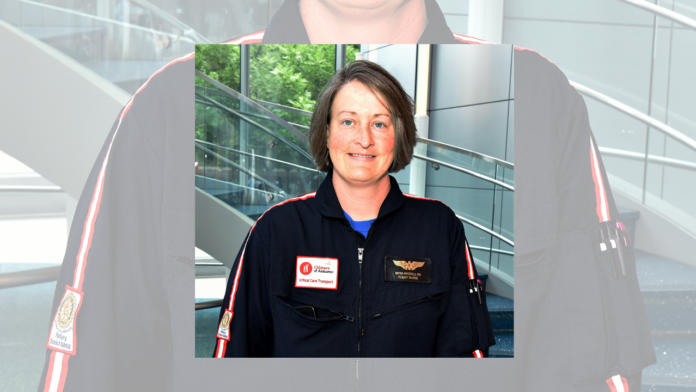CULLMAN, Ala. – When children need to be transported to Children’s of Alabama via ambulance or airlift, the whole ordeal can be incredibly stressful and frightening to a child who is already in pain. Fortunately, these trips have the possibility of being staffed by Flight Nurse Myra Waddell, a Cullman County resident whose years of experience and love for transport nursing helps her serve her patients well, both in a medical and an emotional support sense. Waddell was recently recognized by Children’s of Alabama for completing her 4,000th patient transport, and The Tribune reached out to her to get to know what her experience has been like to get to that point.
About Nurse Waddell
Waddell graduated from West Point High School in 1994 and went through the EMT Basic program the summer after, before attending Wallace State Community College and enrolling in its nursing program. While in school, she worked with the Logan Volunteer Fire Department, and after graduating in 1997 she went to work at Cullman Regional as a nurse in the adult telemetry unit. She worked at Cullman Regional for eight months before starting at Children’s in the Pediatric ICU in ’98. In ’99 she began working part-time in the pediatric transport unit until she transferred to a full-time transport position in 2002.
Waddell says her decision to become a flight nurse was influenced by her own experience being a patient in a medical helicopter as a child.
“I was a patient on a helicopter when I was 10, and that kinda sparked the idea to do something along those lines,” she stated. “I needed some experience after nursing school in order to pursue that, and when I made the move to Children’s I realized that there was a pediatric-specific transport team. It was totally different from the helicopter I was in, you know, the EMS helicopter, and the ones I’d seen around more publicized. It was more of a mobile Intensive Care Unit, and that kinda piqued my interest. With my PICU experience there at Children’s, I was able to start some part-time work with them.”
She went on to say, “After the first trip, I loved it. I loved everything about it – not knowing what we’re gonna do every day, the uncertainty of it all, and it’s just you and your partner.”
What’s it like in the air?
“I’d like to tell you I don’t get nervous anymore, but that would be a lie. I still get nervous sometimes – not with the flying aspect of it, but just more of pre-game jitters. You’ve gotta know what to do, got to do everything right, and to be honest the day that I stop being nervous is probably the day I’ll stop doing this. I feel like it keeps you on your game if you’ve got a healthy fear.”
The helicopter transports start with an alert from the transport coordinator, and the transport nurses on duty hear the diagnosis and report from dispatch on the way. Waddell said that a lot of patients she sees are stable and can talk to her, but the work can still be harrowing.
“It can get intense, but I like the intensity. Don’t get me wrong, I like the ‘easy’ cases,” she said, “but the intense ones are what keep me on my toes.”
Along with the expected medical treatment, Waddell says a lot of her cases utilize her bedside manner.
“These kids can get nervous when they’re flying or riding in the ambulance, and you know they’re hurt on top of being scared,” she said, “so I’ll talk to them or hold their hands to help them calm down until we reach the hospital.”
4,000 patient transports later
“It’s just crazy to think about how I’ve already done this 4,000 times. It feels like I started just yesterday. You know, it’s a lot of hard work, and the stress and adrenaline really keep me on my toes all the time, but I’m glad to be doing what I’m doing,” said Waddell. “I lived in Birmingham for about 11 years before moving back to Cullman, so I get to do the job I love while back in my home county. I wouldn’t change things for the world.”





















